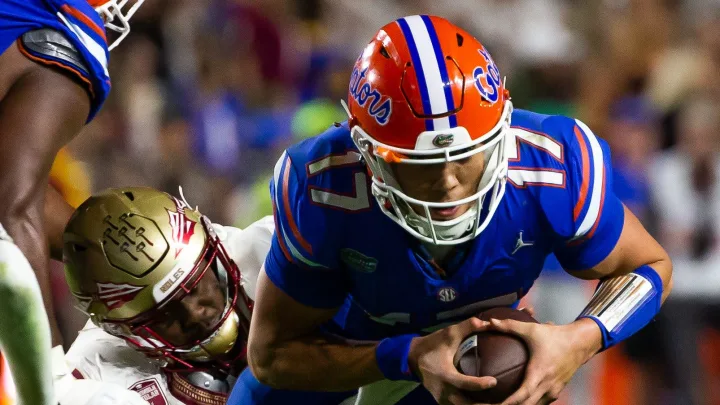Can Florida’s Defensive Line Build Off a Promising 2024 Season and Elevate in 2025?
The Florida Gators’ defensive line showed flashes of dominance in the 2024 season, offering hope for a resurgence under head coach Billy Napier. While the unit wasn’t consistently elite, it demonstrated the potential to disrupt opposing offenses, particularly in key matchups. As the program looks ahead to 2025, the question becomes whether this group can take the next step—transforming from a promising but inconsistent front into a true force in the SEC. The answer will depend on player development, schematic adjustments, and the ability to maintain depth amid the grueling demands of college football’s toughest conference.
Florida’s defensive line in 2024 was a mix of emerging talent and veteran leadership. Players like Princely Umanmielen (before his transfer), Cam Jackson, and TJ Searcy provided disruptive moments, while younger contributors such as Jamari Lyons and Kelby Collins showed growth. The unit’s ability to generate pressure improved compared to 2023, particularly in obvious passing situations, but consistency against the run remained an issue.
One of the most encouraging signs was the increased depth. Unlike previous years, where injuries decimated the rotation, Florida had enough bodies to stay fresh late in games. This was crucial in close contests, as the defensive line’s stamina allowed them to close out wins against Tennessee and nearly upset Georgia. However, the lack of a true game-wrecking interior presence (outside of occasional flashes from Lyons) kept the group from being truly dominant.
Additionally, Florida added transfer help to bolster the depth, including former five-star recruit Damon Wilson Jr. (via Georgia), who could provide an immediate boost off the edge.
Defensive coordinator Austin Armstrong’s aggressive approach helped the defensive line play more freely in 2024, but there were still moments where the unit was exposed in run defense. In 2025, the key will be finding a balance between attacking upfield and maintaining gap integrity—something that plagued the Gators in losses to Ole Miss and Missouri.
Armstrong’s willingness to rotate players kept the group fresh, but he must ensure that the best players are on the field in critical moments. Too often in 2024, Florida’s pass rush disappeared in late-game situations, allowing opposing quarterbacks to extend drives. More creative blitz packages and better situational awareness could help mitigate this issue.
The SEC remains the most physically demanding conference in college football, and Florida’s defensive line will face a gauntlet of elite offensive fronts in 2025. Games against Georgia, Texas, LSU, and Ole Miss will test whether this unit has truly taken the next step.
Georgia, in particular, will be a measuring stick. The Bulldogs’ offensive line has been a perennial strength, and if Florida’s defensive front can hold its own in that matchup, it will signal real progress. Similarly, facing Texas’ powerful running game and LSU’s high-octane passing attack will reveal whether the Gators can be versatile enough to handle different styles of offense.
Injuries have derailed Florida’s defensive line in recent years, but the 2024 season saw improved durability. Maintaining that trend will be essential in 2025. If Lyons, Collins, or Searcy miss significant time, the drop-off could be steep unless younger players like McCray or incoming freshmen step up.
The transfer portal additions provide insurance, but the best-case scenario is that the core stays healthy and builds chemistry throughout the season. A deep rotation will be necessary to survive the SEC grind, especially in November when fatigue becomes a factor.
The pieces are in place for Florida’s defensive line to be one of the most improved units in the SEC in 2025. With a mix of experienced returners, high-upside underclassmen, and key transfer additions, the Gators have the talent to be disruptive. However, talent alone won’t be enough—development, scheme adjustments, and consistency will determine whether this group becomes a true strength.
If Jamari Lyons takes the next step as an interior force, if TJ Searcy and Kelby Collins become more polished pass rushers, and if LJ McCray lives up to his potential, this defensive line could be the backbone of a much-improved Florida defense. But if the unit struggles against the run again or fails to generate consistent pressure in big games, it could be another season of “what ifs” for the Gators.
The 2024 season provided a glimpse of what this defensive line could be. Now, the challenge is turning that potential into production. If they do, Florida’s defense could be the surprise of the SEC in 2025. If not, it may be another year of frustrating inconsistency in Gainesville.



